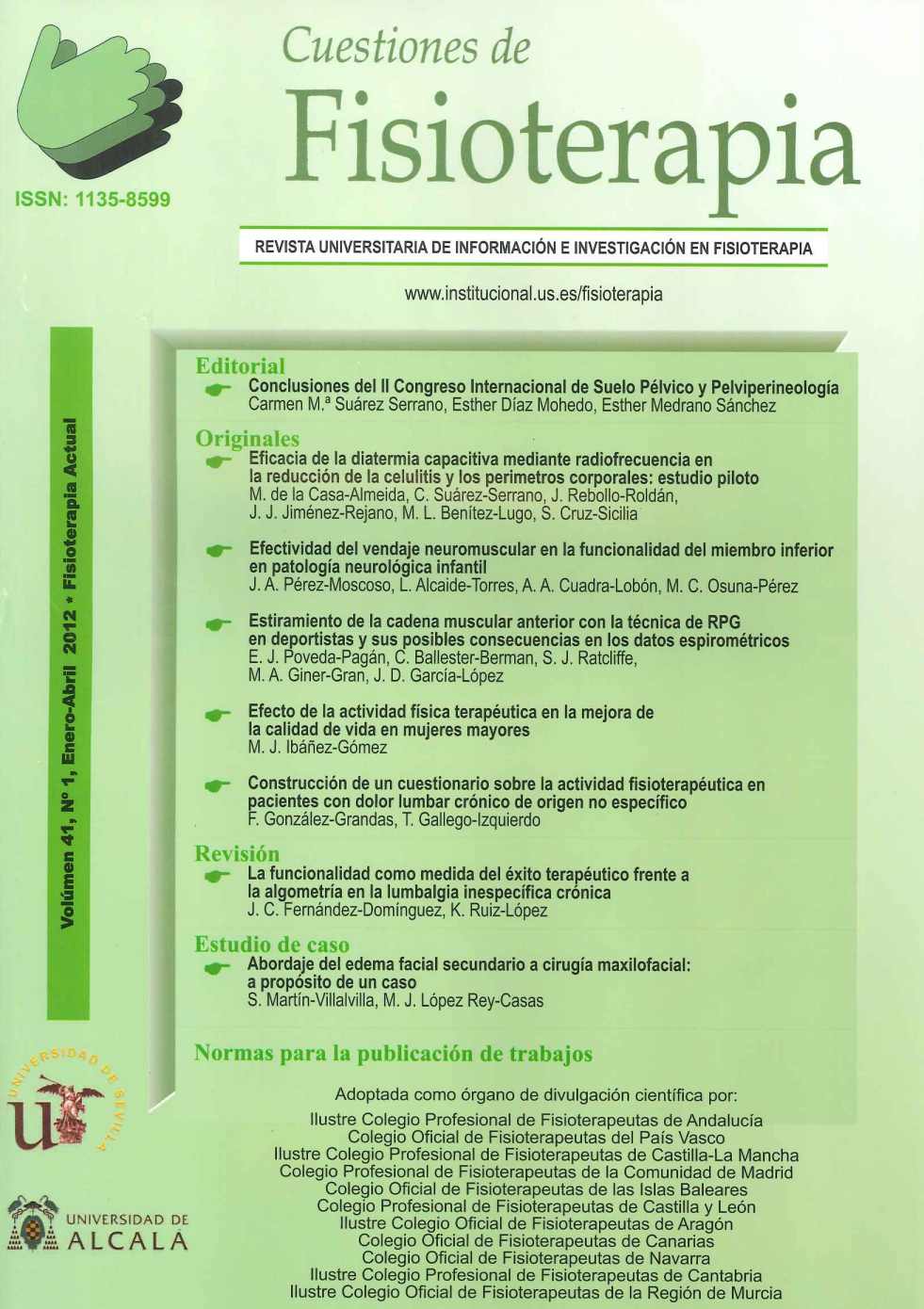Articles
Year 2019, Volume 48, Issue 1
Inter and intra-examiner reliability of dry needling of supraspinatus muscle tendon in asymptomatic subjects: a descriptive cross-sectional study
Abstract
Introduction: shoulder pain is the second most common reason for medical visits and the rotator cuff pathology is the most frequent one. In physiotherapy dry needling is increasingly being applied on tendon pathologies as it has resulted in significant improvements for the patients’ clinic. In clinical practice, when dry needling is performed successfully, the needle is not normally tracked with any kind of ultrasound scan. Objective: to evaluate the inter and intra-examiner reliability of dry needling in the supraspinatus tendon. Material and method: a cross-sectional descriptive study was conducted. Eight men and eight women aged between 24 and 29 years were recruited in the School of Physiotherapy at the University of Alcalá. Two examiners performed the dry-needle puncture in each shoulder at a different time, and a third one kept track of the needle in the tendon using ultrasound scan. Results: to evaluate the intra and inter-examiner reliability, the agreement percentage and Cohen’s Kappa were calculated. The reliability for each examiner shows a high concordance with the ultrasound scan, being this for examiners 1 (P1 = 93.8 %; P2 = 100 %), and for examiner 2 (P1 = 90.7 %; P2 = 96.9 %). On the other hand, reliability amongst examiners also shows a high concordance being (E1 = 96.9 %; E2 = 93.8 %) for the right shoulder and (E1 = 96.9 %; E2 = 93.8 %) for the left one. Conclusion: there is a high concordance in the inter and intra-examiner reliability of dry needle in the supraspinatus tendon in healthy subjects
Keywords: dry needle, reliability, shoulder, tendon, ultrasound scan.

